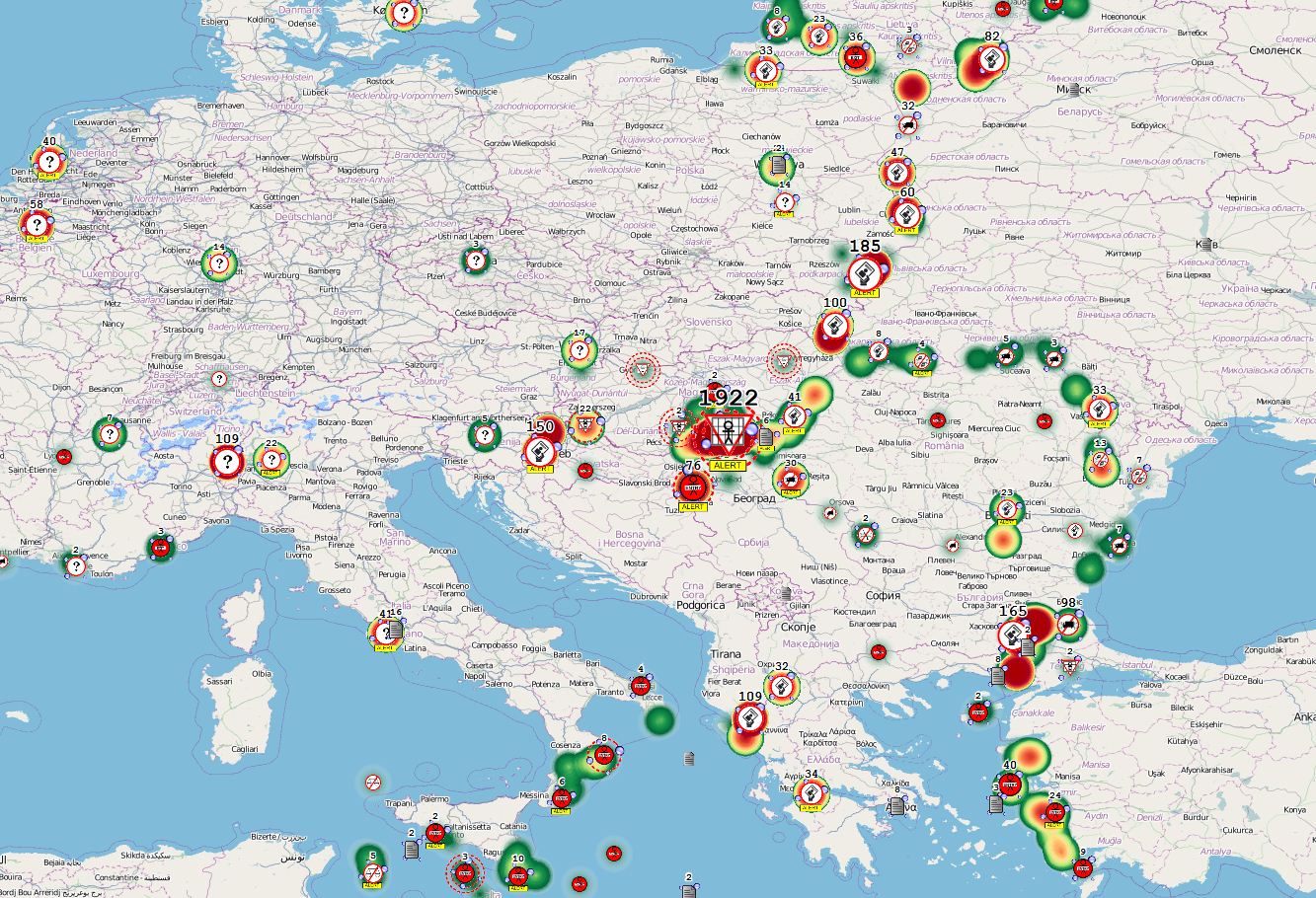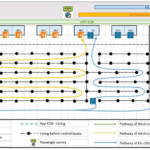With EUROSUR, the EU Commission has a powerful border surveillance system at its disposal. It brings together reconnaissance data from aircraft, drones and soon also aerostatic balloons. Based on the images, a Frontex unit then decides on further measures in the “pre-frontier area”.
The EU border agency Frontex has launched a series of new surveillance methods in the Mediterranean. This was written by EU Migration Commissioner Dimitris Avramopoulos in response to several questions from MEP Sabine Lösing. The capabilities are part of the EUROSUR border surveillance system launched by the European Union five years ago. It links the Frontex headquarters in Warsaw with the border authorities of the 28 Member States. Through their national coordination centres, Frontex is informed of all important incidents at the external borders of the European Union. According to the latest figures, around 148,000 irregular migration incidents have been reported since EUROSUR was set up, and around 33,000 have concerned organised crime.

At the heart of the EUROSUR system is satellite reconnaissance, which Frontex itself can use to observe at borders. The images come from commercial satellite services and from optical and radar-based satellites of the EU’s “Copernicus” Earth Observation Programme. They are collected, processed and transmitted to Frontex by the European Union Satellite Centre (SatCen).
The image suppliers include the armaments group Airbus, which sells images from its radar satellites TerraSar-X and TanDEM-X with a resolution of 24 cm. Copernicus” is the first customer to use the Airbus Group’s “space data highway” for fast communication with the satellites. The use of the data for the individual users was only recently simplified with the help of an app.
Surveillance of new areas

Frontex is already using EUROSUR to monitor coastal regions in Algeria, Tunisia and Libya. According to Avramopoulos, this monitoring will “is expected to cover new areas”.
Now the technical capabilities of Copernicus will be expanded by new services. The system is intended to detect and report “irregularities in ship behaviour” (own translation). Information on the location, the ship’s name and deviating behaviour will be transmitted. For example, a ship can be considered suspicious if it does not sail on normal routes or slows down its speed.
Since this year, Frontex has also received images of reconnaissance drones flown by the European Maritime Safety Agency (EMSA). Initially, this is a pilot project for two MALE-class drones of different sizes. They are to take to the skies 120 calendar days a year, and a total of 900 flight hours are planned. Regular operation could begin in 2019. At any rate, this is what an earlier draft of the “Copernicus” work programme for the coming year says. In the near future, Frontex also plans to test aerostatic balloons for “Aerial Border Surveillance”.
Observation of the “pre-frontier area”

Last year, Frontex launched a “Multi-purpose Aerial Service” (MAS). Videos recorded by aircraft over the Mediterranean are streamed in real time to a situation centre at EUROSUR headquarters in Warsaw. As part of the “FRONTEX Compatible Operational Image” project, the Agency is testing the improvement of this real-time transmission to the headquarters in Warsaw. This concerns not only aircraft and drones but also ships and vehicles on land. They are also to be equipped with GPS transmitters so that Frontex in Warsaw is always informed of their location. Corresponding ATOS transmitters have already been procured.
Frontex uses the aerial photographs to observe the so-called “pre-frontier area”, which, according to the Commission, covers more than 500 square kilometres. A “Frontex Risk Analysis Unit” decides which areas are to be monitored. To this end, the Agency launches the “ProDetect service”. With this service, Frontex wants to identify “locations and activities of interest” in the “pre-frontier area”. The procedure processes previous incidents and is intended to provide an early warning function.
If a region is considered relevant, Frontex and the Member States can activate the “MUSO (Multi Source) Migration Analytical Assessment” service. This is followed by a first analytical report on “a specific activity and/or criminal organisation”. It documents irregular border crossings or criminal offences as smuggling. According to the Commission, the situation reports also include socio-economic factors and information from openly accessible sources (OSINT). These could be social media, but presumably vessel positioning systems are meant here. Finally, “MUSO” can also be used to process information from refugees who, upon their arrival in Europe, are obliged to hand it over to Frontex interviewers or to the immigration authorities of the Member States.
Frontex expects more intelligence on boats of refugees

The new capabilities considerably extend the surveillance of the Mediterranean Sea. Frontex also expects significant more intelligence on boats of refugees. According to the EUROSUR regulation, Frontex is not allowed to share this information directly with third countries. The External Sea Borders Regulation, on the other hand, stipulates that the responsible control centre must be informed immediately in the event of an emergency at sea.
With the support of the European Union, Libya has designated a sea rescue zone for international waters, and Italy plans to set up an operational sea rescue control centre in Tripoli by 2020. In the future, Libya will even be the first third country to be connected to EUROSUR through the back door.
In its latest annual report on the implementation of the Regulation on the External Sea Borders, Frontex therefore asks for the green light to transmit the coordinates of refugee boats to the Libyan coastguard in future. The Agency refers to the International Convention for the Safety of Life at Sea (SOLAS Convention), according to which captains are obliged to give such notification. However, the scientific services of the Bundestag point out that warships and state ships are excluded from this. This assessment is therefore shared by a head of unit in the German Federal Ministry of Transport and Digital Infrastructure. Frontex missions could invoke this exception “to prevent sensitive information from becoming accessible to ‘insecure’ recipients”. The Libyan coastguard is undoubtedly one of them.
Image: EUROSUR pilot project of 2009, when the danger for Frontex still came from the East (all rights reserved Frontex).




